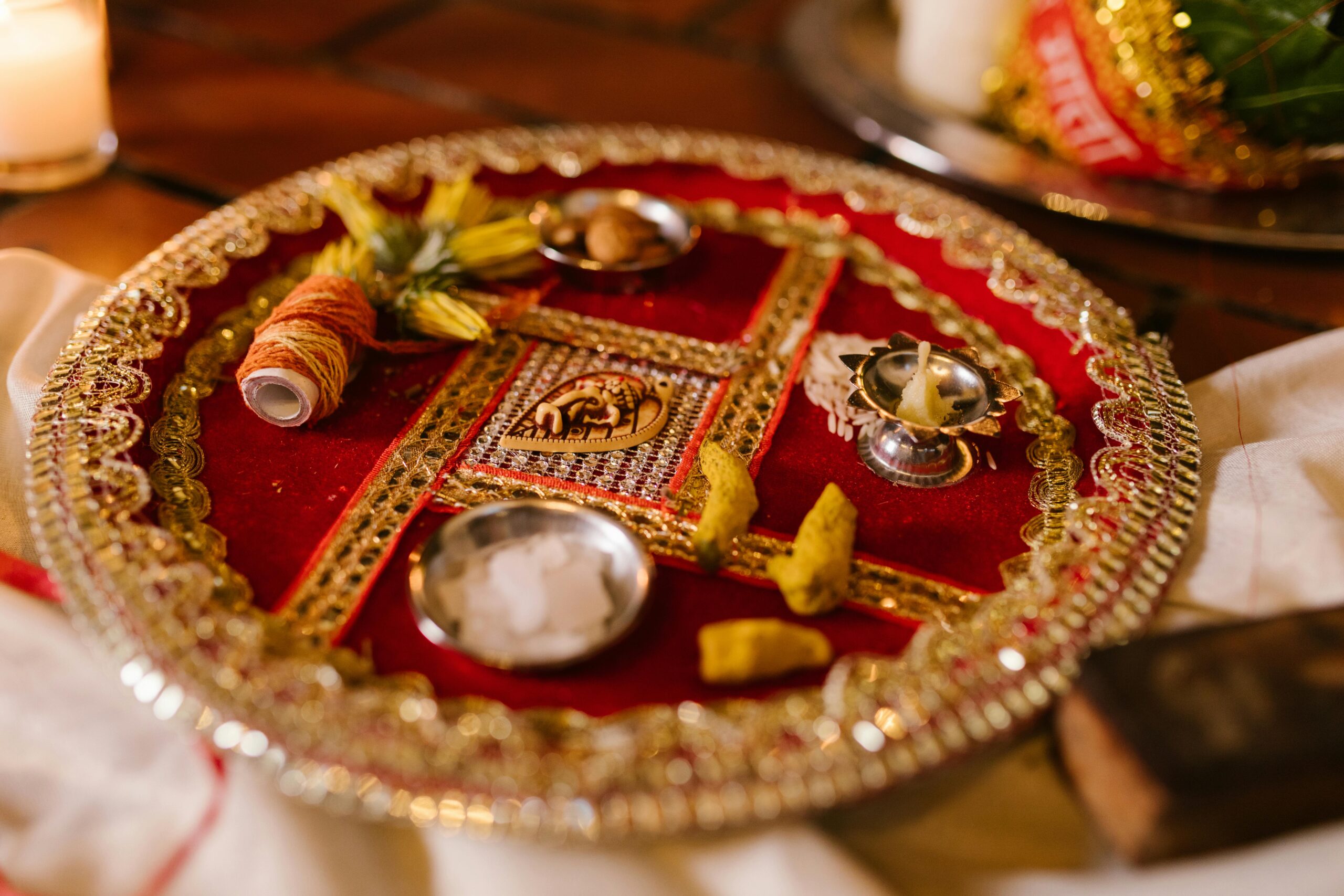Deity worship, an integral facet of Hindu spirituality, encompasses a series of intricate rituals aimed at invoking and honoring the divine presence. As per the religious scriptures, worshiping God is a daily ritual. Deity worship is done through Panchopachar (पंचोपचार पूजा) or Shodashopachar (षोडशोपचार पूजा ) rituals
- Panchopachar Puja (पंचोपचार पूजा): Submission of Sandalwood, Flowers, Incense, and Diya to Lord in addition to naivedya (sacred food)
- b. Shodashopachar Puja (षोडशोपचार पूजा ): More than sixteen rituals are provided that includes Panchopachar as well.
It is advised to perform deity worship daily, ideally thrice a day (trikaal), following the Shodashopachara puja ritual; if not feasible, conduct it once in the morning, or resort to simpler offerings of incense, Diya, and flowers as prescribed in Dharmashastra to ensure worship in any circumstance.
Our religious books also define the process in which the daily puja rituals need to be performed. Below is the step by step process for performing the daily puja:
- Start the puja with Invocation (आवाहन): Meditate on the deity. At the time of invocation, take Akshat, Tulsi leaves and/or flowers in your hand. After that, taking the name of the deity and saying ‘Namah’ at the end, offer him, Akshat, Tulsi leaves and flowers and join hands. Ex. ‘Shri Ganapataye Namah’ for Shri Ganpati. ‘Shri Durgadevaya Namah’ for Shri Durgadevi.
- Offering a seat (Aasan): Offer favourite flowers, leaves etc. to the specific deity in the form of a seat (e.g. Durva to Lord Ganesh, Bel to Lord Shiva, Tulsi to Lord Vishnu) or Akshat.
- Offering water to wash their feet: Keep the deity in a copper vessel (ताम्रपात्र) and offer water to him from the a copper laddle (Achmani).
- Offering water to the deity: To clean the idol, if there are metal idols, instruments, shaligram etc., then offer water on them. If there is a clay idol, then sprinkle only water from the flower or Tulsi plant. If there is a picture, first wipe it with a dry cloth. Then wipe with a wet cloth and again with a dry cloth.
- Clothes: Ideally, one should offer two cotton clothes to the Gods. Wear one piece of cloth around the neck of the deity like an ornament, and keep the other at the feet of the deity.
- Giving Upvastra or Yagyopaveet (जनेऊ): Its always better to offer Yagyopaveet or Upvastra to the male deities.
- Applying scent (sandalwood or चंदन): Apply scent to the first deity with the ring finger. After this, take a pinch between the thumb and ring finger of the right hand and offer first turmeric and then kumkum at the feet of the deity.
- Offering flower or leaves (पुष्प-पत्र): Offer specific flower or leaves to a specific deity which attract more of their element, e.g. Bell to Lord Shiva and yellow flowers to Lord Ganesha etc. Instead of offering the flower on the head of the deity, offer it at the feet of the deity; the stem of the flower should be towards the deity and the face should be in your direction.
- Showing incense: While showing incense to the deity, do not spread it with your hands. To attract the element of a specific deity in greater quantity, burn incense sticks of specific fragrance in front of him, e.g. Henna to Lord Shiva and rose to Shri Lakshmidevi. Generally perform Aarti with two incense sticks.
- Performing Aarti with the diya: Perform the diya-arti of the deity three times slowly in the clockwise direction. Also, ring the bell with your left hand.
- Prasadam: Offer Naivedya to the deity whatever is possible for you from milk-sugar, coconut, jaggery, fruits, kheer etc. Preferably serve naivedya on banana leaves. Do not serve salt. You can find the complete way of offering prasad on this link
After offering Prasadam, perform Diya aarti or Kapoor arti of the deity. Finally pray to the deity mentally and preferably circumambulate (parikrama) around the deity. If there is no space for parikrama, go around your seat three times.
In the end, ask for forgiveness from the deity for the mistakes and shortcomings committed by us knowingly or unknowingly during the puja and end the puja.
If you want to know more about the daily puja, visit this link


One Reply to “How to perform daily puja Part 2 – Process and Rituals”
Comments are closed.